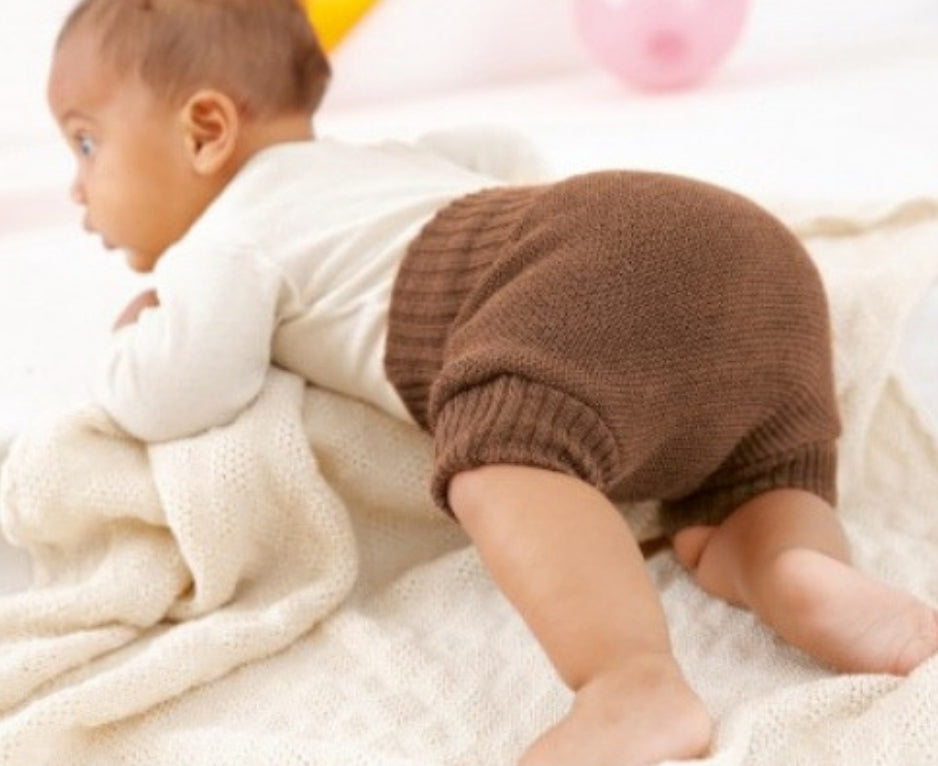
Disana's Cloth Nappy System - Simply Wrap your Baby in Nature
Being a first time mum or parent means a lot of decisions need to be made before the arrival of your little bundle of joy, including the decision of:
"What are we going to put on our bubs bottom?"
In our modern world, it is not about the lack of choice that drives mums or parents to try reusable Nappies.
It has become a lifestyle choice going down the natural, cloth nappy way as we are faced with completely new challenges of our time.
According to KEEP AUSTRALIA BEAUTIFUL:
- Australians use around 5.6 million disposable nappies per day.
- Two billion used disposable nappies go into landfill sites in Australia each year.
- Scientists estimate disposable nappies can take up to 500 years to decompose.
- In Australia, 95% of parents use disposable nappies
- Disposable nappies are full of chemicals such as Sodium Polyacrylate, Tribuytl Tin (a highly toxic chemical), chlorine, alcohol, synthetic perfumes, sodium lauryl sulfates and sodium fluoride. Many of these chemicals have been banned in women’s hygiene products and have been proven to be extremely toxic when absorbed through the skin, many with long term risks.
- The plastic that lines a disposable doesn’t allow air to circulate which can cause heat rash and skin irritations in some babies.
Besides the environmental impact of disposable nappies, there is also the cost factor that leads young families to choose reusable cloth nappies over disposable ones.
It is true that the initial cost of a reusable cloth nappy system compared to a disposable nappies is more expensive.
But once you consider you will buy ONE whole nappy system that will last from birth to potty training in comparison to more than five THOUSAND disposables nappies, which can quickly add up to $2000 more, you will understand the cost efficiency of cloth nappies.
Disana's natural nappies have been around for a long time and have been worn, cherished and handed down by generations of parents, ever since Disana's first tie on nappy was produced in 1969.
Even 40 years later, disana's natural nappy system hasn't lost any it's popularity world wide and there are good reasons for that.
Disana only uses approved untreated, fair trade organic cotton, wool and silk to ensure a natural, breathable, moisture absorbent nappy system that creates a comfortable and safe environment on your baby's skin.
Disana's natural tie on nappy system's ongoing popularity among the growing market of reusable nappies in Australia and the world, is based on the fact that it is one of the easiest, most sustainable, organic washable nappy systems around from birth all the way through potty training.
What is included in Disana's Natural Nappy System:

The following instructions will show you how to change your baby's nappy simple and safe:
1.
The knitted nappy is the centre piece of the disana natural nappy system.
Spread the knitted nappy on the changing table in front of you.
The slim front part of the nappy has to be folded to the straps.
Also fold the upper, broad edge of the nappy a little.
Depending on how much you fold the edge, you can adjust the size of your baby's nappy.
On the prepared knitted nappy you have to place a brushed cotton liner to support the absorbency.
After that you can place a piece of paper fleece which helps you to remove coarse dirt during the nappy change.

2.
Now your baby can be placed on the prepared nappy package. Your baby is in the perfect position if the upper edge of the nappy runs 2-3 cm above an imagined line across the belly button.

3.
First you pull up the brushed cotton liner, together with the paper fleece between the legs and carefully hold it with one hand on the belly.
Now both edges (left and right) of the upper part of the nappy, has to be folded up and also held on baby's belly. Keep the material under easy tension.

4.
Now the front part with the stripes has to be pulled between the legs.
Here again, keep the material under easy tension, in order that there are no creases that pinch and rub your baby.

5.
In the final step the knitted nappy's straps have to be crossed on your baby's back to the front side.
Loop the stripes. If your baby is very small make sure that the loop isn't pushing on the belly button.

6.
The woolen overpants, a water impermeable and yet breathable cover has to be worn over the nappy package.
The soft cuffs gently close the nappy package in the belly and the legs.
Please take care that there's not a piece of nappy looking out from under.

The natural characteristics of wool make sure that nothing can leak out and that the nappy package remain sealed over hours.
Additionally it keeps your baby snug & warm without overheating due to the temperature regulating properties of New Wool.
What to do once the nappies are dirty?
- When the tie-on nappies are wet and dirty remove any solids into the toilet or remove the flushable/compostable paper fleece that are also and place cotton nappy and liner in a mesh laundry bag inside a nappy bucket.
- When you have a full load, place laundry bag in washing machine and wash at 60 degrees.
- Washing the nappies in a laundry bags helps to keep the ties from tangling around other clothes in the machine.
- The tie-on nappies can be washed with other clothes, you don't have to wash the nappies separately, which makes it more economical.
- The nappies usually dry very quickly and are quickly ready for the next nappy change.




